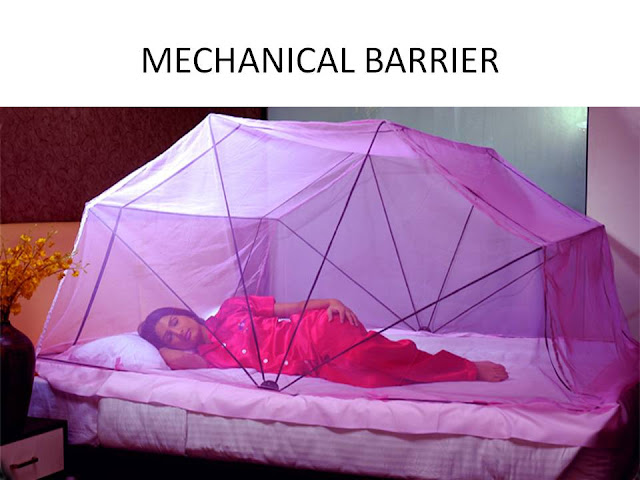7. Cultural, 8.Pysical & 9. Mecanical Control
7. CULTURAL METHODS OF CONTROL
Definition :
Manipulation of cultural practices to the disadvantage of pests.
I.
Farm level practices
Sl.no.
|
Cropping
techniques
|
Pest checked
|
Summer Ploughing
|
Red hairy
caterpillar
|
|
|
Allowing ducks
into the field
|
Swarming
caterpillar
|
|
Puddling
|
Rice mealy bug
|
|
Trimming and
plastering
|
Rice grass
hopper
|
|
Pest free seed
material
|
Potato tuber
moth, Banana rhizome weevil, Sweet potato weevil.
|
|
High seed rate
|
Sorghum shootfly
|
|
Plant density
|
Rice brown
planthopper
|
|
Earthing up
|
Sugarcane early
shoot borer, cotton stem weevil.
|
|
Detrashing
|
Sugarcane
whitefly and Scale.
|
|
Destruction of
weed hosts
|
Citrus fruit
sucking moth
|
|
Destruction of
alternate host
|
Cotton whitefly
(tomato, brinjal, etc.,)
|
|
Flooding
|
Rice armyworm
|
|
Trash mulching
|
Sugarcane early
shoot borer
|
|
Pruning /
topping
|
Mango stem borer
Clip off tip of
seedlings-Rice stem borer
|
|
Intercropping
|
Sorghum+lablab
to minimize Sorghum stem borer
|
|
Trap cropping
|
Ø Cabbage & cauliflower with
mustard-Diamond back moth
Ø Cotton with castor-Spodoptera litura
|
|
Water management
|
Alternate wetting
& drying- Brown planthopper
|
|
Judicious
application of fertilizers
|
Rice leaf folder
|
|
Timely
harvesting
|
Sweet potato
weevil, Pulse beetle, Potato tuber moth.
|
II. Community
level practices
1. Synchronized
sowing: Dilution of pest infestation (eg) Rice, Cotton
2. Crop
rotation : Breaks insect
life cycle
3. Crop sanitation
Ø Destruction of insect
infested parts (eg.) Mealy bug in brinjal
Ø
Removal of fallen plant parts (eg.) Cotton squares
Ø Crop residue destruction
(eg.) Cotton stem weevil
Advantages
|
Disadvantages
|
1. No extra skill
2. No costly inputs
3. No special equipments
4. Minimal cost
5. Good component in IPM
6. Ecologically sound
|
1. No complete control
2. Prophylactic nature
3. Timing decides success
|
8. PHYSICAL METHODS OF CONTROL
Definition: Modification of physical factors in the
environment to minimize (or) prevent pest problems. Use of physical forces like
temperature, moisture, etc. in managing the insect pests.
A. Manipulation
of temperature
v Sun drying the seeds to
kill the eggs of stored product pests.
v
Hot water treatment (50 - 55oC for 15 min) against rice white
tip nematode.
v
Flame throwers against locusts.
v
Burning torch against hairy caterpillars.
v Cold storage of fruits and
vegetables to kill fruitflies (1 - 2oC for 12 - 20 days).
B. Manipulation
of moisture
v Alternate drying and
wetting rice fields against BPH.
v
Drying seeds (below 10% moisture level) affects insect
development.
v Flooding the field for the
control of cutworms.
C. Manipulation
of light
v Treating the grains for
storage using IR light to kill all stages of insects (eg.)
v
Infra-red seed treatment unit.
v
Providing light in storage go downs as the lighting reduces
the fertility of
v Indian meal moth, Plodia
sp
v Light trapping.
D. Manipulation
of air
v Increasing the CO2
concentration in controlled atmosphere of stored grains to cause asphyxiation
in stored product pests.
E. Use of
irradiation
v Gamma irradiation from Co60
is used to sterilize the insects in laboratory which compete with the fertile males
for mating when released in natural condition.
(eg.)
Cattle screw worm fly, Cochliomyia hominivorax control in Curacao Island
by E.F.Knipling.
F. Use of
greasing material
v Treating the stored grains
particularly pulses with vegetable oils to prevent the oviposition and the egg
hatching. eg., Bruchid adults.
G. Use of
visible radiation
v Yellow color preferred by
aphids, cotton whitefly. Eg. Yellow sticky traps.
H. Use of
Abrasive dusts
v Red earth treatment to red
gram: Injury to the insect wax layer.
v
Activated clay: Injury to the wax layer resulting in loss of
moisture leading to death. It is used
against stored product pests.
v Drie-Die: This is a porous
finely divided silica gel used against storage insects.
9. MECHANICAL METHOD OF CONTROL
Use of mechanical
devices or manual forces for destruction or exclusion of pests.
A. Mechanical
destruction : Life stages
are killed by manual (or) mechanical force.
Manual Force
v Hand picking the
caterpillars
v
Beating : Swatting housefly and mosquito
v
Sieving and winnowing : Red flour beetle (sieving) rice
weevil (winnowing)
v
Shaking
the plants : Passing rope across rice field to dislodge caseworm and
v
shaking neem tree to dislodge June beetles
v
Hooking : Iron hook is used against adult rhinoceros beetle
v
Crushing : Bed bugs and lice
v
Combing : Delousing method for Head louse
v
Brushing:
Woollen fabrics for clothe moth, carpet beetle.
Mechanical
force
v Entoletter:
Centrifugal
force - breaks infested kernels - kill insect stages - whole grains unaffected
- storage pests.
v
Hopper dozer: Kill nymphs of locusts by hording into trenches
and filled with soil.
v
Tillage implements: Soil borne insects, red hairy
caterpillar.
v
Mechanical
traps: Rat traps of various shapes like box trap, back break trap, wonder trap,
Tanjore bow trap.
B. Mechanical
exclusion
Mechanical
barriers prevent access of pests to hosts.
v Wrapping the fruits:
Covering with polythene bag against pomegranate fruit borer.
v
Banding: Banding with grease or polythene sheets - Mango mealybug.
v
Netting: Mosquitoes, vector control in green house.
v
Trenching: Trapping marching larvae of red hairy caterpillar.
v
Sand barrier: Protecting stored grains with a layer of sand
on the top.
v
Water barrier: Ant pans for ant control.
v
Tin barrier: Coconut trees protected with tin band to prevent
rat damage.
v Electric fencing: Low
voltage electric fences against rats.
Advantage of
mechanical control Disadvantages
v Home labour utilization 1. Limited
application
v
Low equipment cost 2. Rarely
highly effective
v
Ecologically safe 3.
Labour intensive
v High technical skill not
required in adopting.











































Comments
Post a Comment